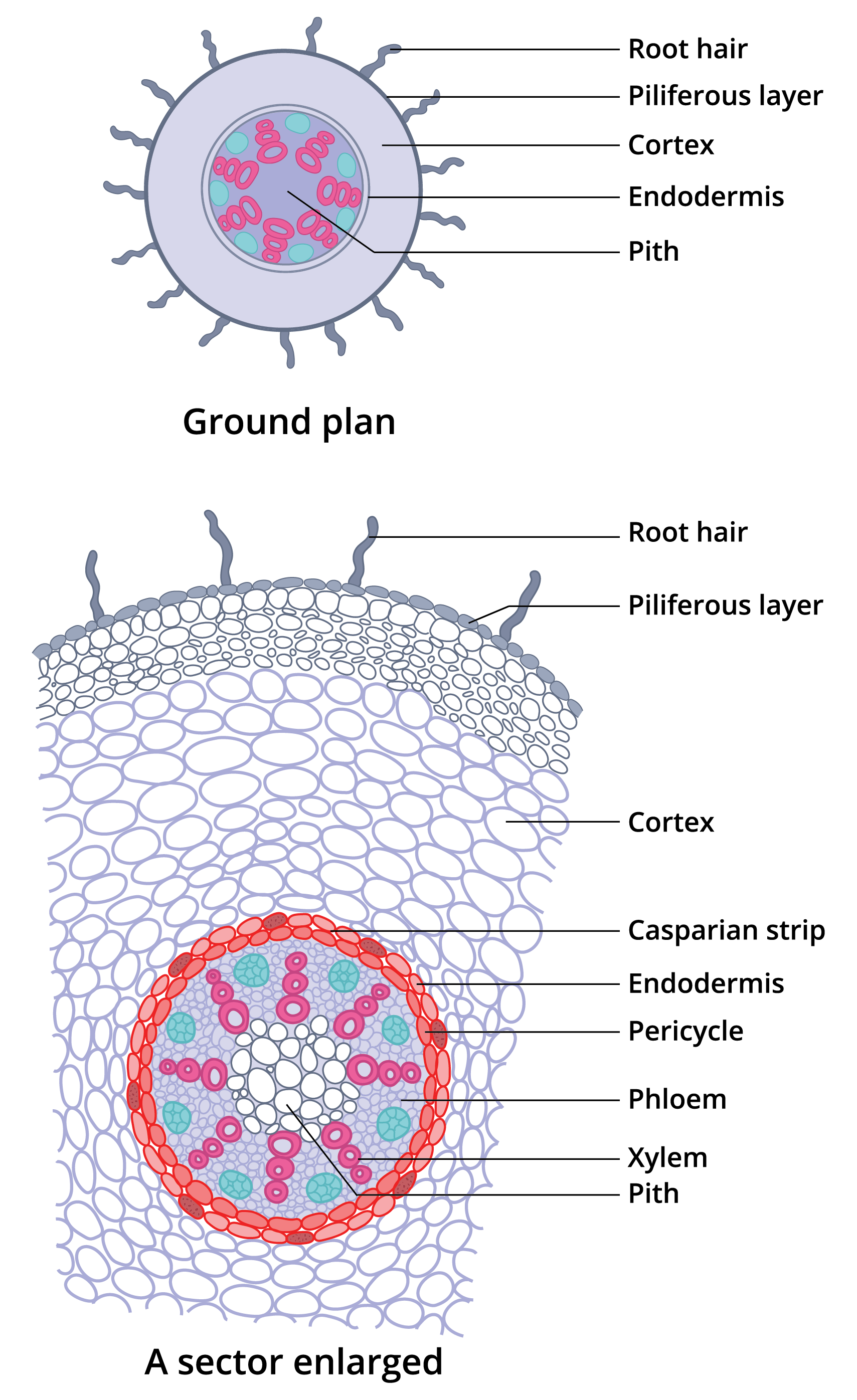
Internal structure of monocot root (Maize) — lesson. Science State Board, Class 10.
Aim To prepare a temporary stained mount of a transverse section of dicot and monocot stem and root to study various plant tissues. Material Required Preserved material of sunflower root and stem Preserved or fresh material of maize root and stem Microscope Sharp blade Slides Watch glass Coverslips Safranin (1gm in 100ml of 50% ethanol) Brush

Monocot Stem Cross Section Monocot Root Cross Section Structure (with PPT The main
The dicot roots are covered by exodermis which is a modified epidermis. Cortex. The cortex in monocot roots is wide. The cortex in dicot roots is narrow. The cortex in monocot roots is composed of only parenchymatous cells. The cortex of dicot roots is composed of both parenchymatous and sclerenchymatous cells.

monocot stem anatomy
Aim: To prepare temporary stained glycerine mounts of transverse sections of stem and root of Dicot and Monocot plants. Material required: Sharp razor, brush, dropper, needles, watch glass, microscopic slides, cover-slips, safrannin, glycerine and compound microscope. Technique: Take 2-3cm long pieces of the material.

Transverse section of a part of a typical monocot root has been sho... YouTube
Transverse Section of the Monocot Root Transverse Section of the Monocot Stem Things to Remember Previous Year Questions Sample Questions Key Terms: Monocot Root, Monocot Stem, Dicot Root, Dicot Stem, Transverse Section Epidermis, Vascular Bundles, Pith, Cortex Aim [Click Here for Sample Questions]
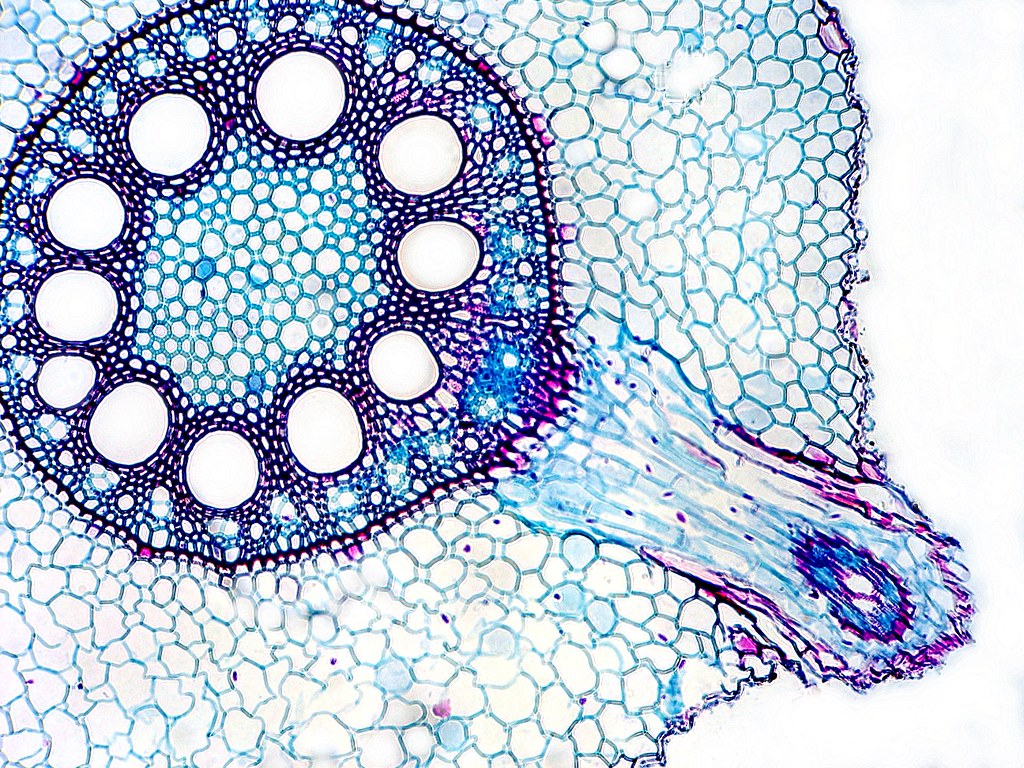
Monocot Stem Cross Section Monocot Root Cross Section Structure (with PPT The main
Overview Test Series Objective The goal is to create a temporary stained mount of a transverse section of dicot and monocot stem and root to investigate various plant tissues. Crack SSC CHSL with India's Super Teachers Get 6 Months SuperCoaching @ just ₹489 ₹449 Your Total Savings ₹40 Purchase Now Want to know more about this Super Coaching ?

Preparation and Study of Transverse Section of Monocot and Dicot Roots and Stems
A look at monocot and dicot stems. 1. The stem supports the plant, facilitates water and nutrient transport between the different parts of the plant, and contains tissues that help the plant grow. The stem supports the plant, holding up the plant's leaves, flowers, and fruits. Within the stem, bundles of vascular tissue, consisting of xylem.
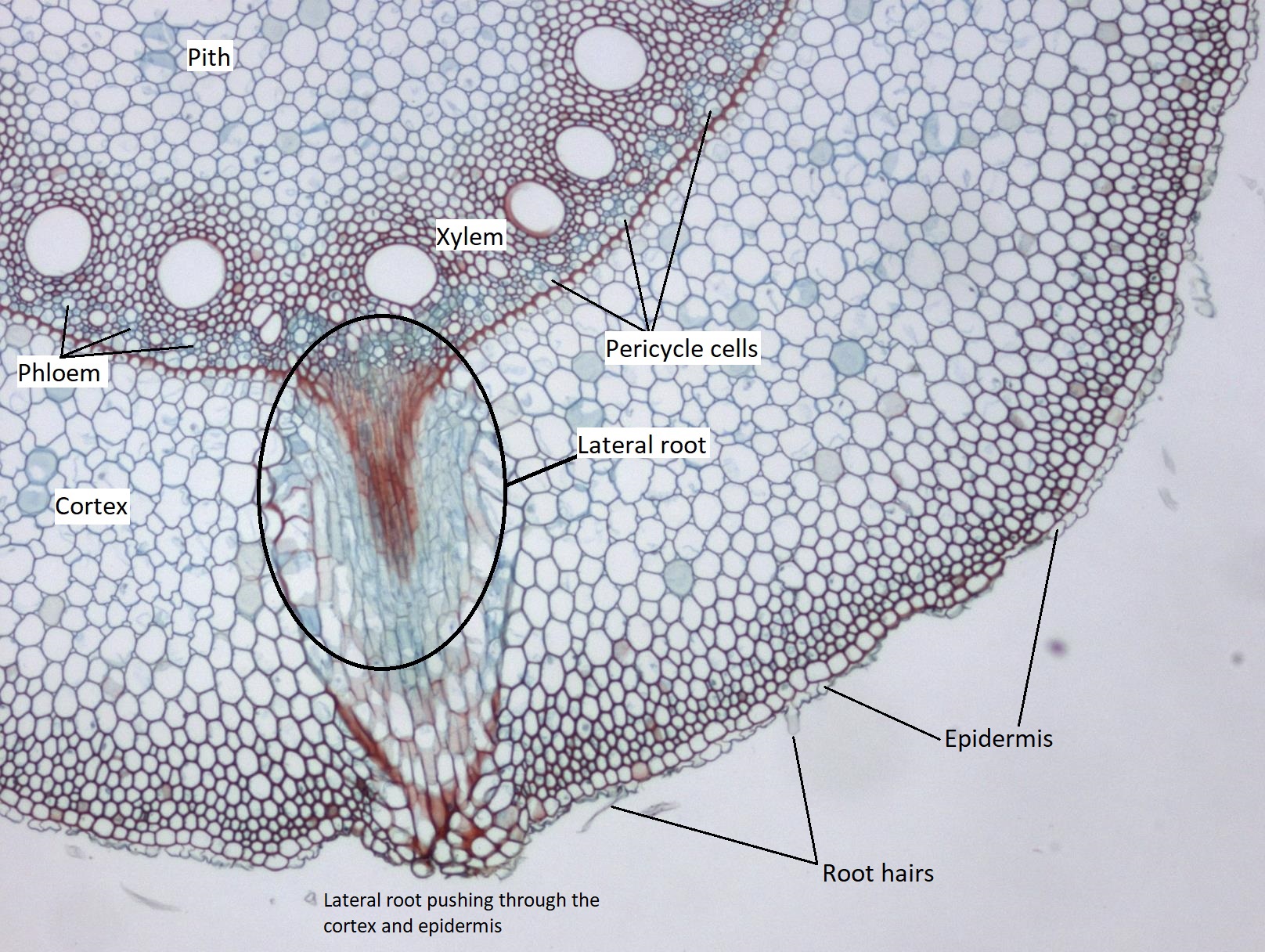
11.1.2 Monocot Roots Biology LibreTexts
Article shared by : The secondary growth occurs in herbaceous and woody Lilifloarae (Aloe. Sansevieria, Yucca, Agave, Dracaena) and other groups of monocots. The meristem concerned with this growth is known as cambium. The cambium appears in a direct continuation of a primary thickening meristem.

Primary structure of monocot stem Maize stem Anatomy of monocot stem
Monocot Root Anatomy PPT: Anatomy of Monocot Root, Monocot Root Transverse Section Anatomical Details, TS Monocot Root under the Microscope, Record Diagram for Monocot Root, Epidermis, Cortex, Endodermis and Stele of Monocot Roots, Stelar Features of Monocot Roots, Learn more: Notes on Anatomy of Monocot Roots
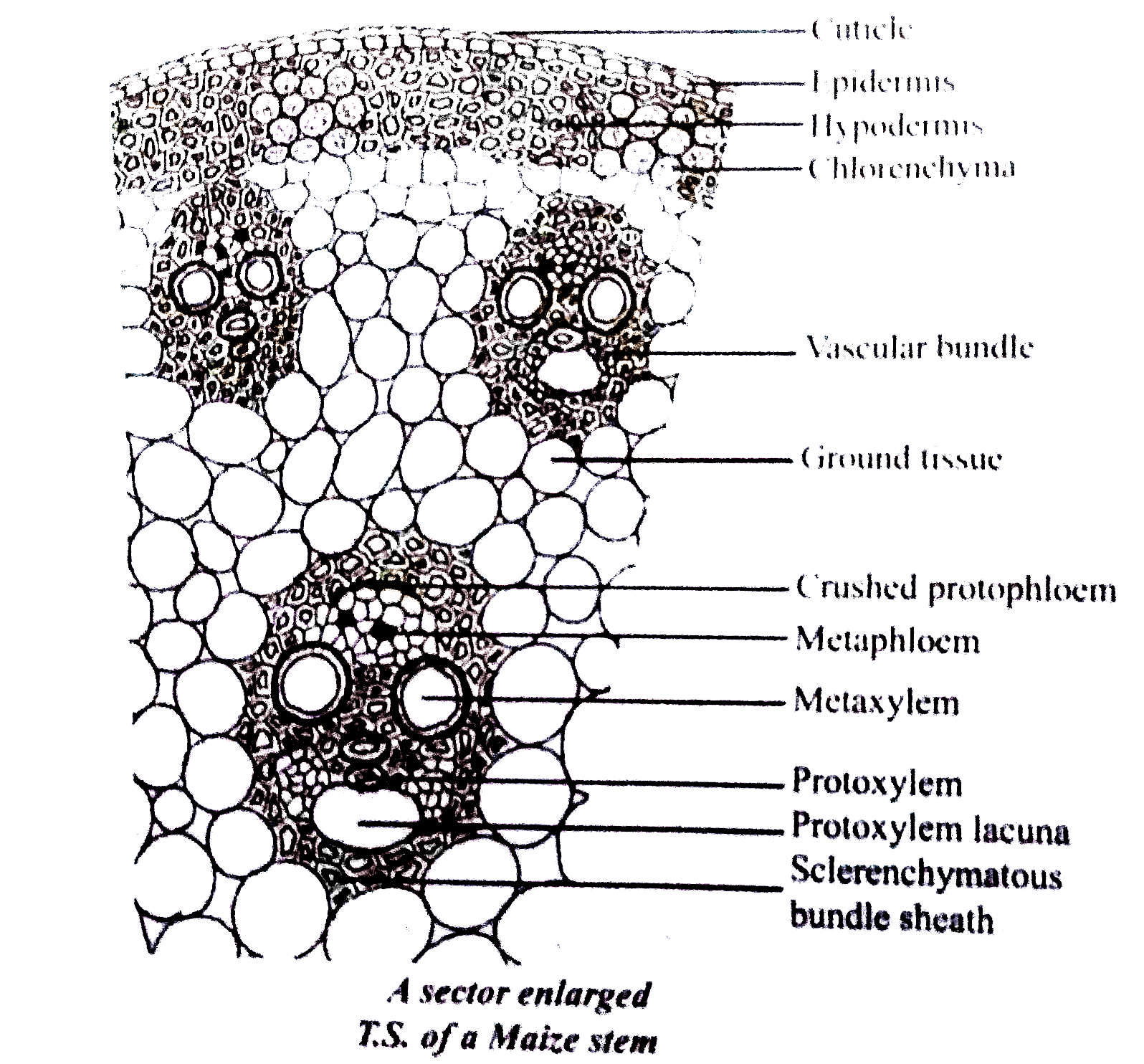
Monocot Stem Cross Section
Monocot root In monocot roots, the vascular bundles are arranged in a circular pattern. Monocots and dicots contain two main types of vascular tissue: the xylem and phloem. The xylem carries water and dissolved minerals upward from the roots to the stem and leaves.

Draw a neat labelled diagram of monocot stem.
How to Draw the Transverse Section of Monocot root | Biology | Grade 11-12https://www.youtube.com/watch?v=oOqVXQcyu4sMusic Credits :- https://www.bensound.co.

Monocot Stem Cross Section
Most of the root is composed of cortex tissue, and the endodermis, the innermost layer of the cortex, borders the stele. The outer layer of the root (external to the cortex) is the epidermis. Figure 3.2.3. 4: Eudicot root cross section. From center out, the xylem (in red) make an X, and the side tissues (green) make up the phloem..

Draw and label the parts of transverse section of monocot root. Brainly.in
Anatomy of monocot root: In many aspects, it is similar to the dicot root. On comparing the two roots, we find the monocot root also consists of epidermis, cortex, endodermis, pericycle, vascular bundle and pith.. Going back to the transverse section of the dicot root, after the endodermis, a few layers of thick-walled parenchymatous cells.

class on structure of monocot stem YouTube
Transverse section of a part of a typical monocot root has been shown in the given figure. Identify the different parts (from \ ( A \) to \ ( E \) ) and select the correct option. (a).
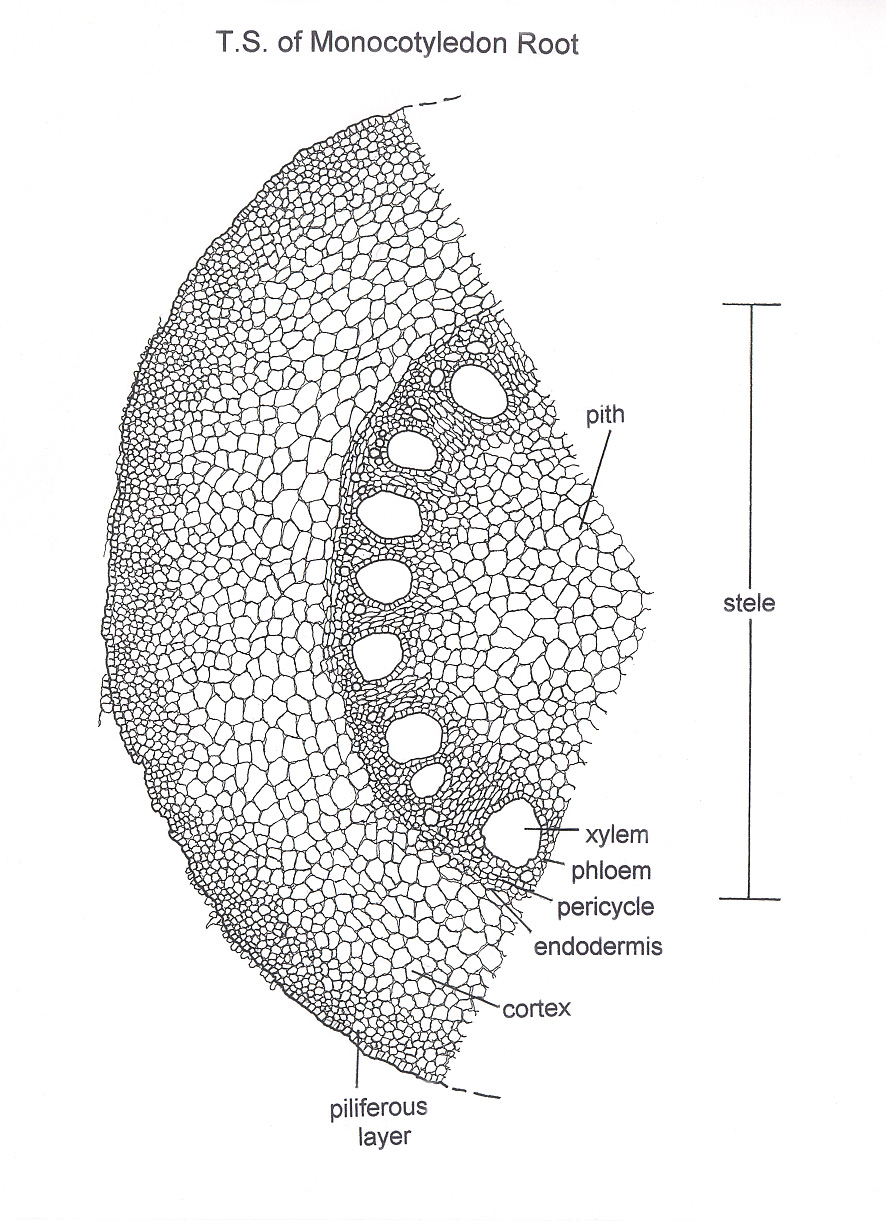
Micscape Image Gallery Botanical Drawing
Organ-specific vascular tissue organisation in the monocot rice and the dicot Arabidopsis. (a) Transverse section through a mature rice root. Vascular tissues are organised in a central vascular cylinder surrounded by the endodermis and embedded in the cortex. (b) Transverse section through a mature rice stem internode.
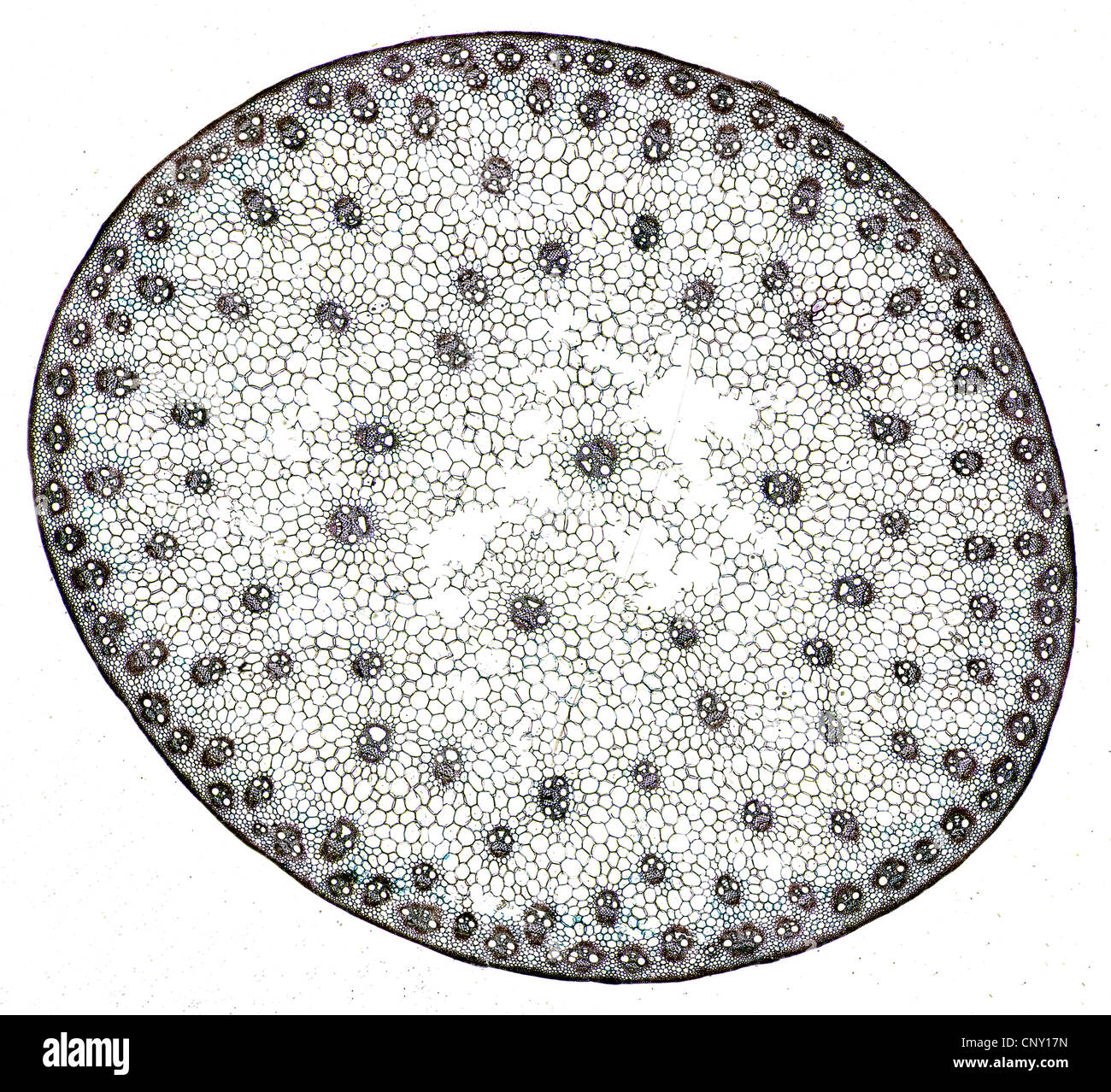
Cross section of a monocot stem with cells and vessel elements Stock Photo, Royalty Free Image
Anatomy of Monocot Root Cross Section The anatomical features of a monocot root can be studied through a cross section (CS) through the root. The present post discesses the anatomy of monocot root with Monocot Root Diagram. Ø Anatomically, the monocot root has been differentiated into the following parts: (1). Epidermis (2). Cortex (3). Endodermis

Preparation And Study Of T.S Of Dicot And Monocot Roots And Stems(Primary)
Preparation and Study of the Transverse Section of Dicot and Monocot Roots and Stems Dicot stem Aim The aim of this study is to closely observe the sentient transverse dicot stem. Requirements Some essential materials are required like root as well as stem of a sunflower, fresh root as well as stem of maize, a microscope as well as the blade.